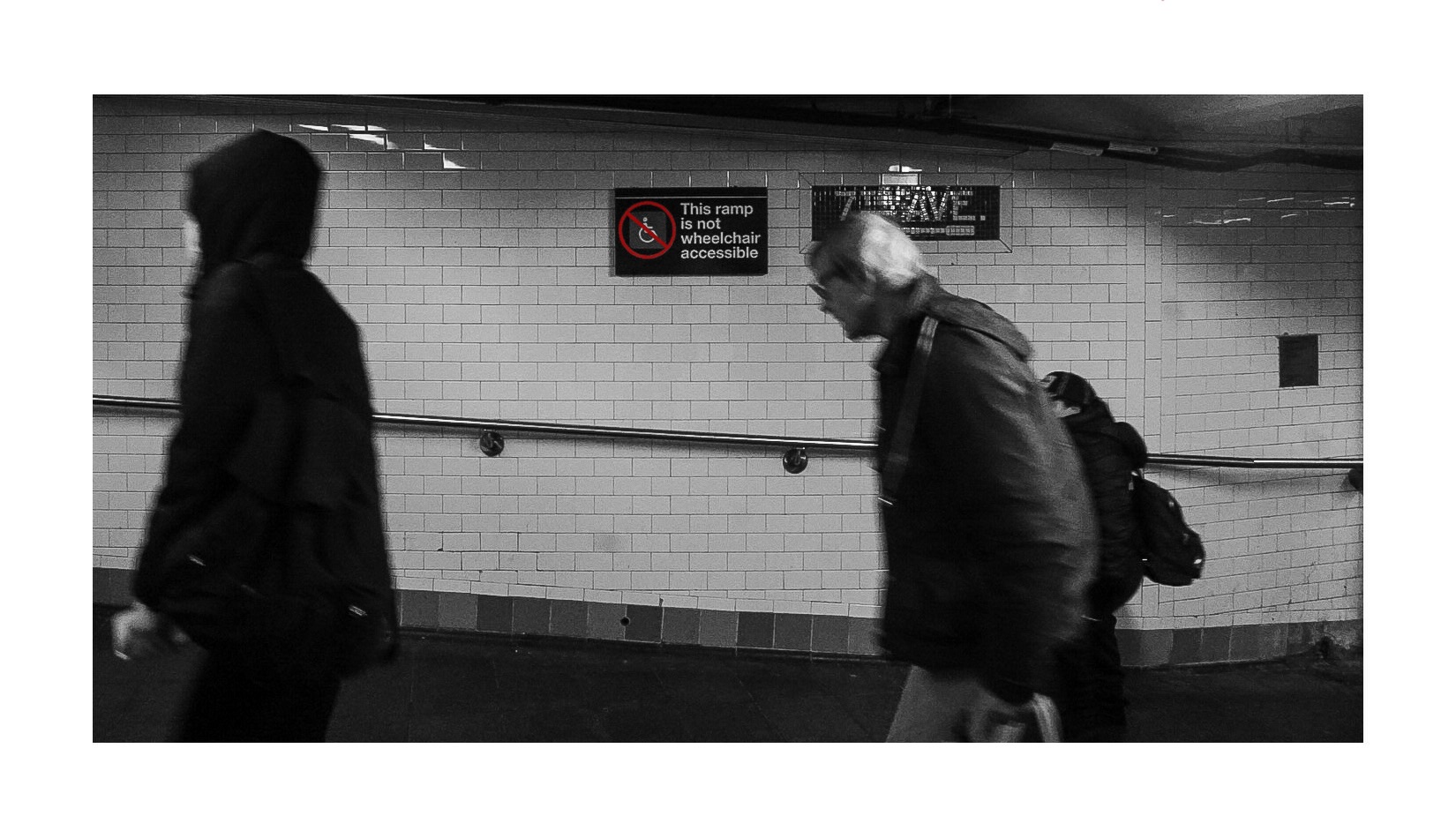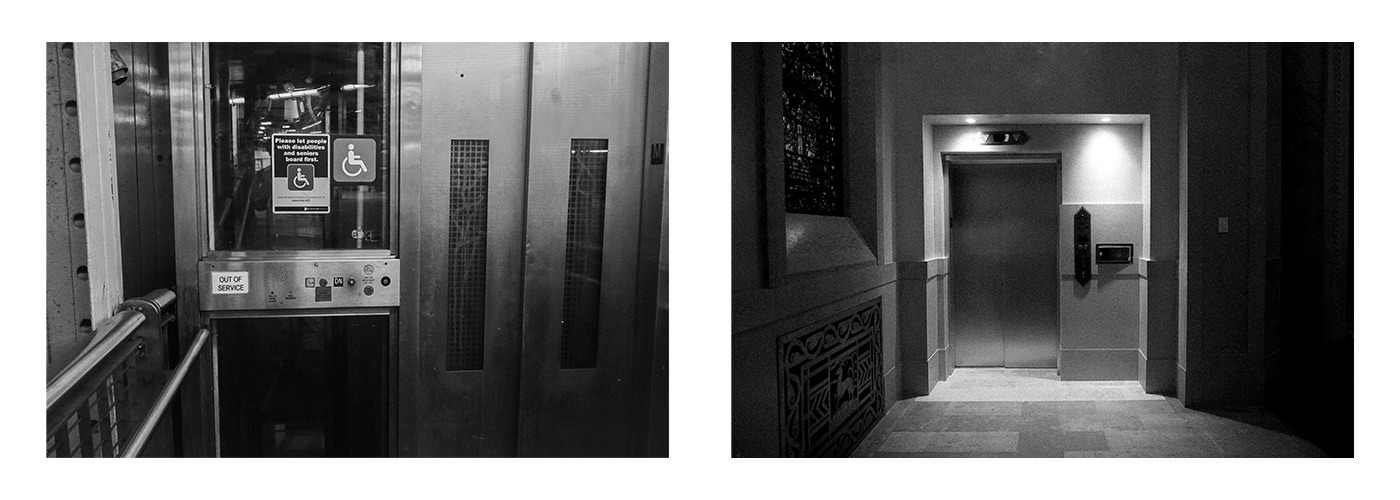ICP Teen Academy
︎︎︎
Matthew Hantgan









He revealed a world I was blind to; I did not notice it then.
From navigating through New York City with my Grandpa and his wheelchair, I learned to slow down and look closely at inaccessible barriers that can not be seen without the camera. Without knowing it at that time, he was teaching me how to look at the world. My grandfather's perspective has informed this entire project. I revisited sidewalks, doorways, and many places he was unable to access and realized everyone passed through, unaware that they were in what might be considered a non-place—a space built for statistics, instructions, and movement, not people or presence.
Although many of the spaces I have captured discuss the city's inaccessible nature, in part to honor my Grandpa, they also reflect a time that did not include perspectives like my Grandpa's into designing space. Architecture is rooted in values, policies, human needs, and the desire for creativity. What is not shown in architecture reflects the unnoticed, the desired, the afforded, or the intentionally ignored.
From the high-rises with small entrances to the small steps in the 100-year-old walk-up, these spaces reflect New York's architectural complexities, of the rich layers of heritage contrasted with the city's inherently inaccessible history. These photos have shown me architecture’s dichotomy; how it can be the most freeing and limitless aspect of human nature, on the other hand, it can constrain what individuals can and cannot do.
While these limiting spaces, where millions pass through, would not seem or feel detrimental, they are natural elements of our environment. I hope my photos can bring you beyond the surface of our everyday environment, and show you the dangers of an environment that normalizes exclusion from public spaces and beyond. I do not want this to be only a critique, but a recognition of how far we’ve come and a reflection of the long way we still have to go.
I understand that while right now, I cannot physically change the infrastructure of the broken ramps or elevators (among the 100+ in the subway), or the unwelcoming facades, I can use my images to invite the viewer to learn about the difficulties of moving through a space that does not include one’s perspective in it’s design. There is so much to create, and there is so much to repair. I hope to show you not only my grandpa’s perspective but also that you can view these photos in your own way to determine how you want to create and envision our future, which involves infinite possibilities and perspectives.
︎
Matthew Hantgan (b. New York, 2006) raised and based in Westchester NY, is a current student of the International Center of Photography’s Imagemakers, Huntington Fine Arts High School Program, and graduating student of The Masters School. As a multidisciplinary artist, Matthew explores all mediums, including photography, painting, print-making, and sculpture to share personal narratives, explore and understand architecture, the environments that shape us, and his memories centered around his Jewish identity. Art has brought Matthew to articulate and understand life experiences, history, and share social issues, like the lack of attention towards creating an accessible environment. His photography takes inspiration from artists such as Daidō Moriyama, William Eggleston, and Brett Weston’s architectural photography. Not limited to those artists, Matthew is constantly inspired and when not doing schoolwork, or art among other things, he can be found in a museum or a library.
Matthew has won several awards including one Scholastic Gold Key Award, and three Silver Key Awards. He has also exhibited a dark room image (“Not For the People; Do not Cross”) in the Katonah Museum of Art’s Young Artists exhibit (2025), and a painting (“Filling in the Dots; After my Eighteenth Birthday”) in the Garrison Art Center’s Identityexhibit (2025), and most recently the ICP’s 2025 Look Up exhibit featuring his work photography diptych titled Retrofitted? (Grandfather Clause).